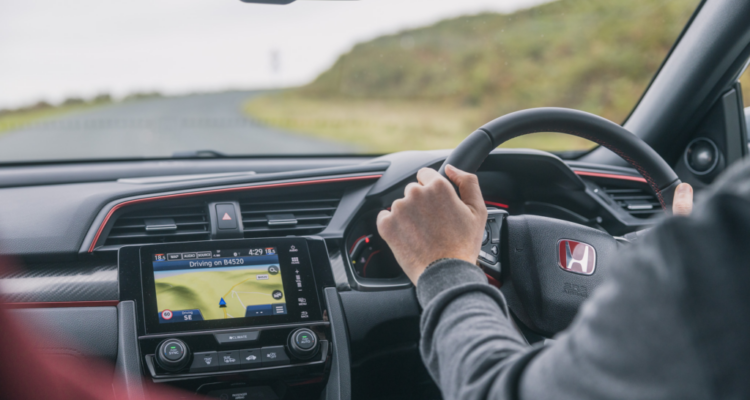The most common car in America finds itself frequently involved in accidents due to a mix of factors. Distracted driving, speeding, and drunk driving are leading causes of these accidents. Despite these issues being widespread, the prevalence of the most common car on the road means it faces these risks more frequently.
Furthermore, the high number of these vehicles on the road increases their chances of being involved in collisions. The volume of traffic combined with risky driving behaviors amplifies the probability of accidents. These cars are often the victims of the same issues affecting all drivers but on a larger scale.
Lastly, certain models may have safety features that, while advanced, aren’t enough to prevent human error. This high visibility and frequent use make the most common car a regular fixture in accident statistics. This highlights the need for continued improvements in both driver education and vehicle safety.
Prevalence of the Most Common Car
The most common car in America holds a significant market share and is driven by a diverse range of people. Various factors such as affordability, brand reputation, and demographics of drivers contribute to its prevalence.
Popularity and Market Share
The leading car model in America boasts extensive popularity due to its affordability and brand reliability. It often ranks highest in terms of sales figures, capturing a substantial piece of the automobile market.
A combination of affordable pricing, efficient fuel economy, and consistent performance makes it a top choice for many. This widespread ownership naturally leads to a higher prevalence in both urban and rural areas.
Top Reasons for Its Popularity:
- Affordability: Competitive pricing attracts first-time car buyers.
- Brand Reputation: Long-standing trust in the brand encourages repeat purchases.
- Fuel Economy: Efficient fuel consumption appeals to cost-conscious drivers.
Demographics of Drivers
Diverse demographics of drivers also impact its prevalence. This popular car model is favored by people of various age groups and socio-economic backgrounds, from young professionals to retirees.
Key Demographic Insights:
- Age Distribution: Popular among young adults due to affordability and older drivers due to reliability.
- Gender: Equally preferred by both male and female drivers, showing no significant gender bias.
- Income Levels: Attracts middle-income individuals who prioritize reliability and cost-effectiveness.
The vast range of drivers amplifies its presence on American roads, contributing to its frequent involvement in accidents simply by its sheer numbers.
Factors Contributing to Accidents
Several factors contribute to car accidents, including vehicle design, driver mistakes, and road conditions. Understanding these aspects helps to identify preventable risks associated with the most common cars in America.

Design and Safety Features
The design and safety features of a car play a crucial role in accident risk. Vehicles lacking advanced safety features like automatic emergency braking, lane departure warnings, and blind-spot monitoring are more likely to be involved in collisions.
Older models, which may not have these technologies, can present higher risks. Additionally, the structural integrity of a car during an impact affects the severity of accidents. Vehicles with poor crash-test ratings may not adequately protect occupants during a collision, increasing injury severity.
| Safety Feature | Impact on Accident Risk |
| Automatic Emergency Braking | Reduces rear-end collisions |
| Lane Departure Warning | Prevents lane-change accidents |
| Blind-Spot Monitoring | Helps avoid side-swipe crashes |
Car manufacturers prioritize different aspects in vehicle design.
Common Driver Errors
Human error remains a leading cause of car accidents. Distracted driving, including phone use and other in-car distractions, significantly increases the risk of accidents.
Speeding is another major factor, as it not only raises the likelihood of crashes but also increases the severity when they occur. Drunk driving continues to be a significant issue, despite strict laws and awareness campaigns.
List: Common Driver Errors
- Distracted Driving
- Speeding
- Drunk Driving
- Aggressive Driving
- Failure to Yield
Driver awareness and adherence to traffic regulations are essential in minimizing these errors. Pittsburgh car wreck attorney services often deal with cases involving these common driver mistakes.
Environmental and Road Conditions
Environmental and road conditions also contribute significantly to car accidents. Poor weather, such as rain, snow, and fog, can reduce visibility and road traction, leading to higher crash rates.
Road conditions like potholes, uneven surfaces, and construction zones create hazardous driving environments. In urban areas, increased traffic congestion can result in more accidents due to frequent stops and starts.
Infrastructure improvements and regular maintenance of roadways are essential steps to minimize these risks. In regions like Pittsburgh, the local government often collaborates with Pittsburgh car wreck attorneys to address these environmental and infrastructural issues.
Impact of Accidents
Accidents involving the most common car in America have far-reaching effects. These impacts cover both personal and societal costs, as well as issues related to insurance and liability. Understanding these impacts can help illustrate why addressing car accidents is so important.
Personal and Societal Costs
Involvement in car accidents can lead to significant injury and, in severe cases, loss of life. More than 20,000 individuals died in accidents during the first half of 2021.
Victims and their families often face substantial medical bills and long-term rehabilitation needs. Beyond personal injuries, accidents contribute to extensive property damage. Over 4.2 million accidents resulted in property damage in 2022 according to Forbes.
On a broader scale, the community experiences increased traffic congestion and strain on public resources such as emergency services and healthcare. Economic costs associated with these accidents reach into the billions, impacting society at large.
Insurance and Liability
Car accidents directly affect insurance premiums and liabilities. Individuals involved in crashes often see a sharp increase in their insurance rates. The increase in premiums can be particularly steep if the driver was deemed at fault.
Insurance companies bear significant costs from payouts related to vehicle damage, medical expenses, and compensation for pain and suffering. The U.S. Department of Transportation estimated that the annual economic cost of crashes is $340 billion.
Liability issues can lead to legal disputes, adding further financial and emotional stress for those involved. Navigating these challenges requires legal assistance and can extend the time taken to resolve claims, adding to the overall complexity and cost.
Prevention and Safety Measures
Preventing car accidents often involves a combination of technological advancements, legislative actions, and driver education. Below are key areas where significant improvements can be made to enhance vehicle safety and reduce accidents.
Advancements in Car Safety Technology
Modern vehicles are equipped with technologies designed to reduce the likelihood of accidents. Features like automatic emergency braking (AEB) and lane departure warnings are becoming standard in newer models.
The National Highway Traffic Safety Administration (NHTSA) has been instrumental in promoting safety features through programs like the New Car Assessment Program (NCAP). The 5-Star Safety Ratings system, introduced in 1993, helps consumers choose vehicles with the best safety technologies.
Adaptive cruise control and blind-spot detection also play crucial roles in mitigating collisions. These technologies work together to improve overall driver response times and situational awareness.
Legal and Policy Changes
Regulating driving behavior through legislation can significantly impact road safety. Laws against driving under the influence (DUI) have been shown to reduce accidents and fatalities. Policies such as seatbelt mandates and distracted driving laws also contribute to safer driving conditions.
Local and federal governments often implement road safety programs aimed at reducing specific types of accidents. For example, improved infrastructure, better road signs, and traffic light enhancements can reduce the likelihood of collisions.
Enforcement is key. Strict penalties for traffic violations, including fines and license suspensions, serve as effective deterrents. Pittsburgh car wreck attorneys often advocate for harsher penalties to improve compliance with traffic laws.






